You’ll see modern parquet floors in hallways
In this guide we’ll explore the history of parquetry and marquetry, while sharing some fantastic examples of the contrasting styles in antiques.
These two types of decorative woodwork techniques date back to Classical civilisations, with some signs – for example, in the ruins of Pompeii – that the ancient Romans used them.
Then it appears that the style fell out of favour during the Middle Ages, before a resurgence during the 16th-17th centuries. And both techniques are still in use today.
You'll see modern parquet wooden floors or marble flooring in hallways, some bedrooms and perhaps most noticeably, basketball courts.
A famous example involves the Boston Celtics. The team played on a parquetry flooring with a mosaic-like pattern between 1946-1999 and today, they continue to play on a replica in tribute.
What is it about marquetry and parquetry that inspires so many people to hold these woodwork techniques in high regard, for both modern and antique craftsmanship?
We’ll explain. But first…
What is the difference between marquetry and parquetry?
Marquetry tends to be particularly intricate
Put simply:
- Marquetry involves creating decorative pictures and designs in veneer
- Parquetry consists of decorative geometric, recurring shapes and patterns
Marquetry tends to be particularly intricate, with some of these pictures looking like paintings within the woodwork. Examples include plants, animals, people and sometimes entire scenes.
The greater linearity of many parquet designs makes it the more practical choice for larger pieces of architecture, such as wood flooring.
Wood is usually the main material of marquetry and parquetry
While wood is usually the main material of marquetry and parquetry, the former is a slight exception. Tortoiseshell and brass are longstanding veneer materials for marquetry.
King Louis XIV and the Versailles parquet floor
One of the most relevant periods of history to examine that showcases the differences between marquetry and parquetry is the reign of Louis XIV in France, the Sun King.
Perhaps the most famous marquetry practitioner was his Flemish cabinet maker, whose style is now named after him, André-Charles Boulle. Using fine craftsmanship with arabesque or intricate, foliate designs, Boulle marquetry became a feature of the lavish furniture in the Palace of Versailles under Louis XIV.
And originally, the Palace of Versailles floors were marble, which required constant washing. When the Sun King wanted to expand and renovate the Palace of Versailles, the new decadent parquet de Versailles floor featured a geometric plait-like parquetry pattern in its stunning architectural features.
Now let’s take a look at the use of marquetry and parquetry in some of the antiques in our collection.
Examples of marquetry compositions
We have plenty of antique pieces demonstrating the careful, delicate handcrafted woodwork of cabinet makers and other designers specialising in marquetry.
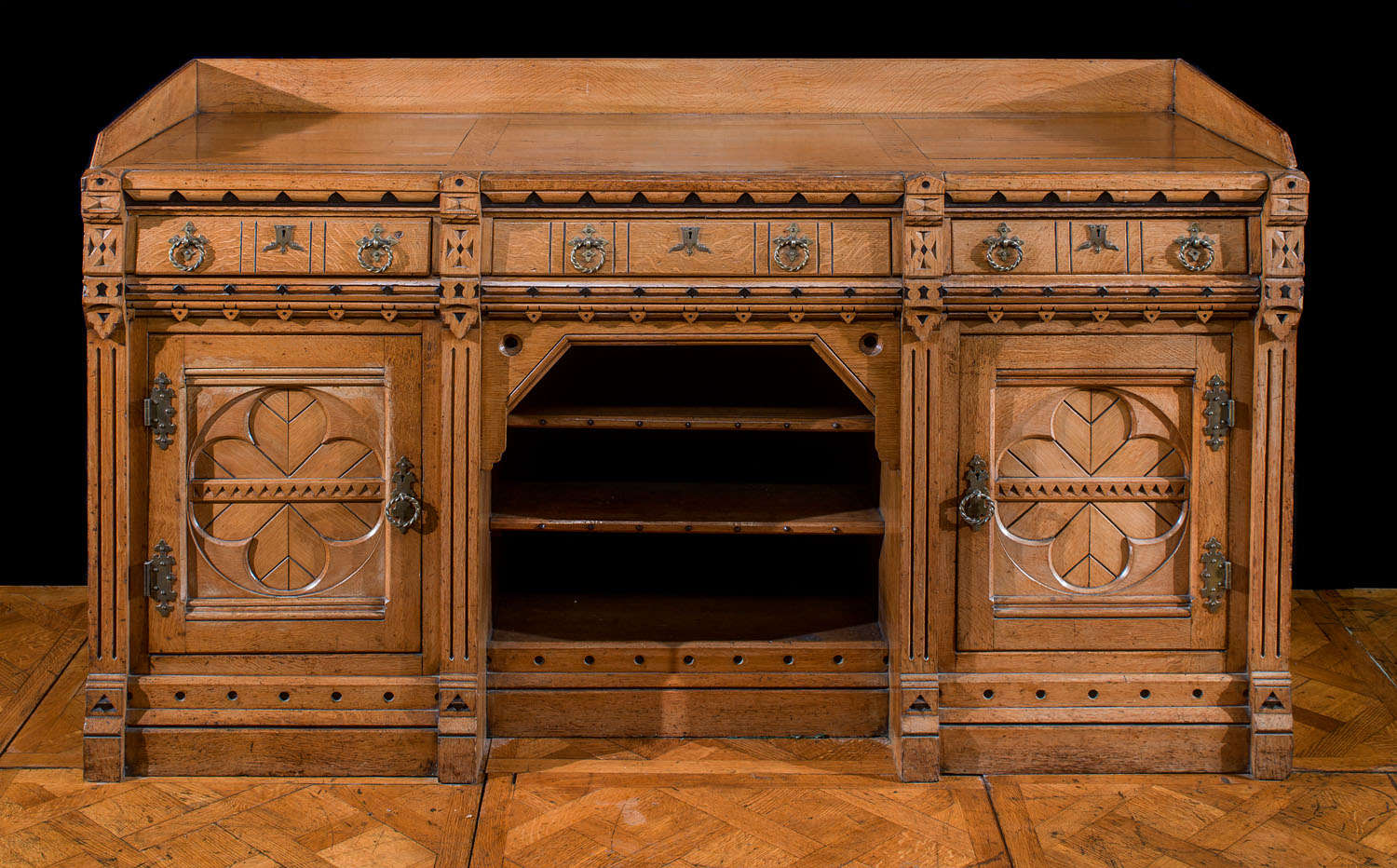
× 
Here is a Gothic revival oak sideboard from renowned English furniture designer Charles Bevan, who has pieces in the V&A and is notable for his marquetry designs. There are clear signs of high attention to detail in the carving throughout.
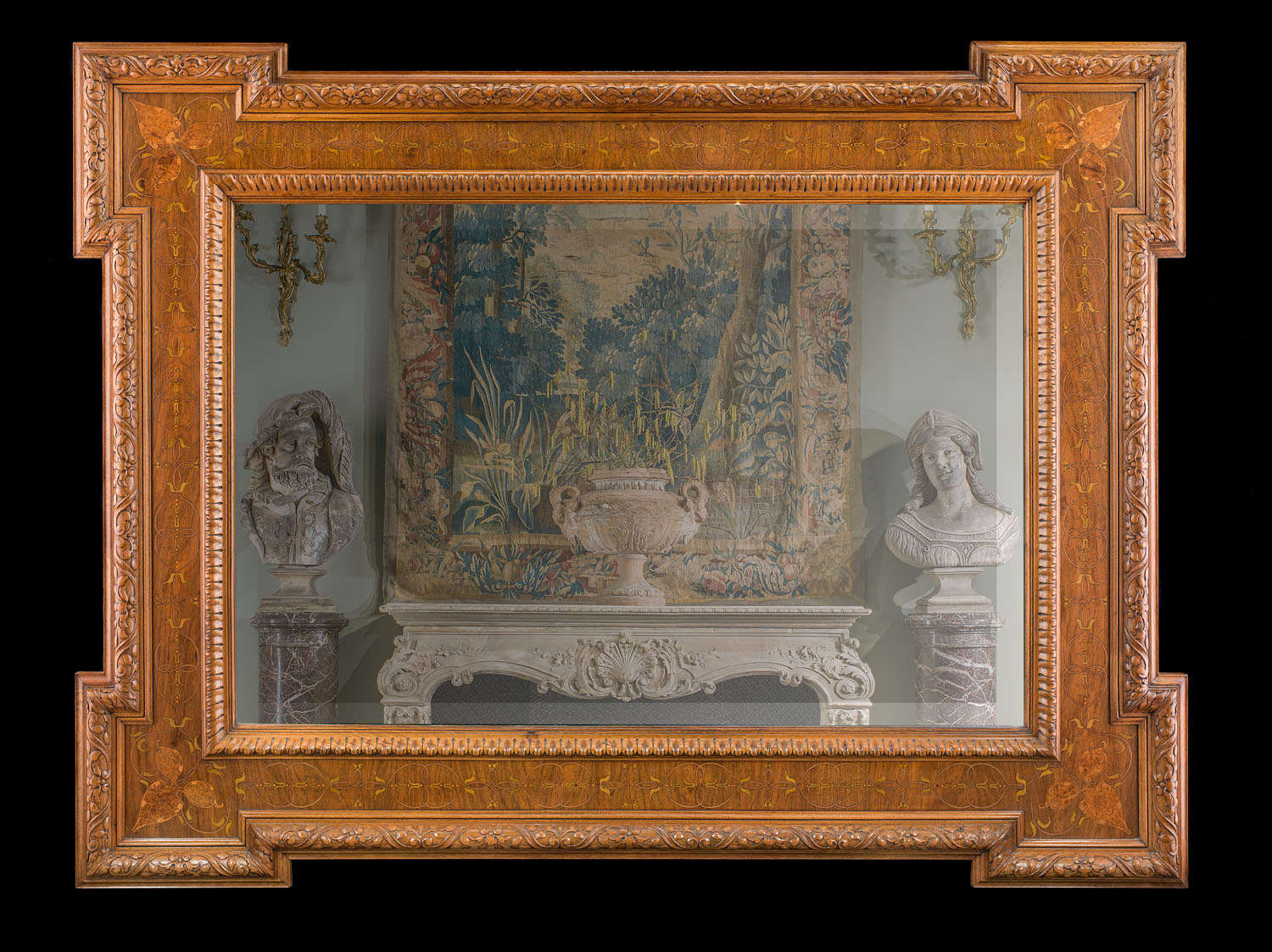
× 
Above is a Victorian Art Nouveau walnut wall mirror. It has a carved foliate outer frame enclosing the burr, box and harewood classical marquetry.
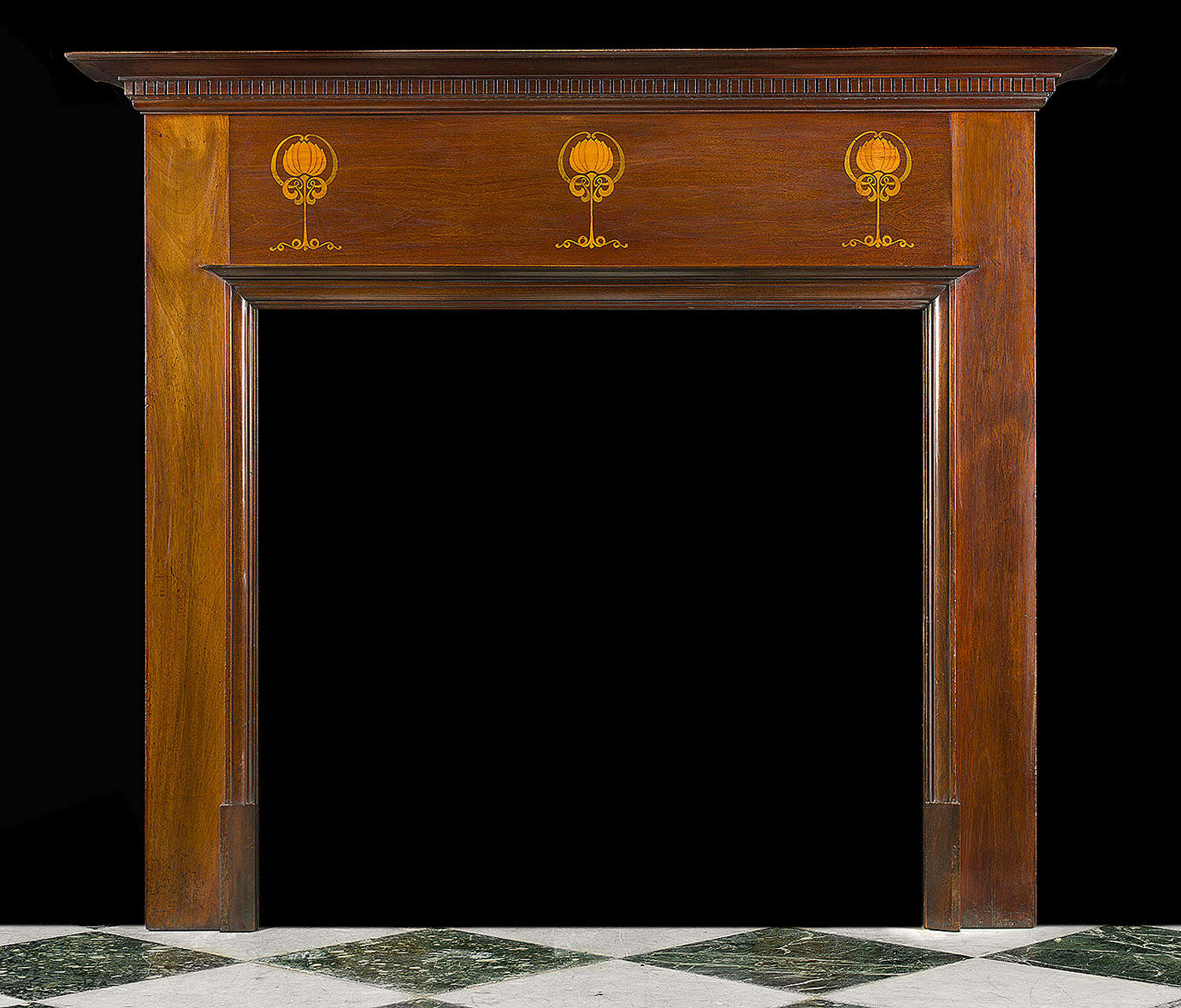
× 
Westland London are specialists in fireplaces and above you can see a mahogany, artistically floral detailed Edwardian inlaid marquetry fire surround.
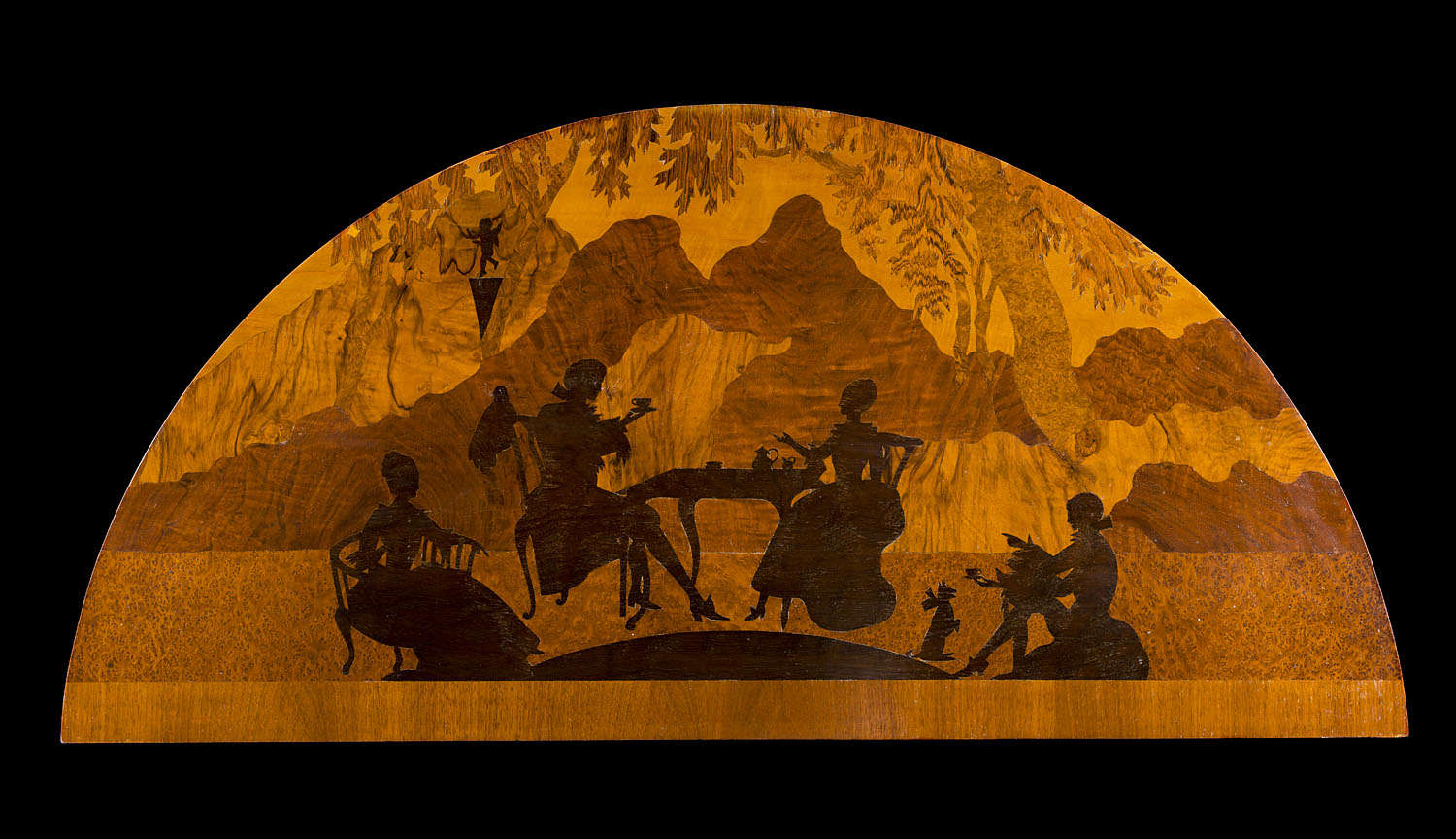
× 
This stunning art deco demi lune panel depicts silhouette figures having tea in a highly detailed Fete Champetre landscape. It’s a perfect example of the intricacy associated with marquetry and likely demonstrated to clients in the trade some of the different woods available.
Parquetry examples
They feature highly detailed pictures but also recurring geometric patterns
Now technically, the two pieces we are showing you here feature both parquetry and marquetry. In other words, they feature highly detailed pictures but also recurring geometric patterns.
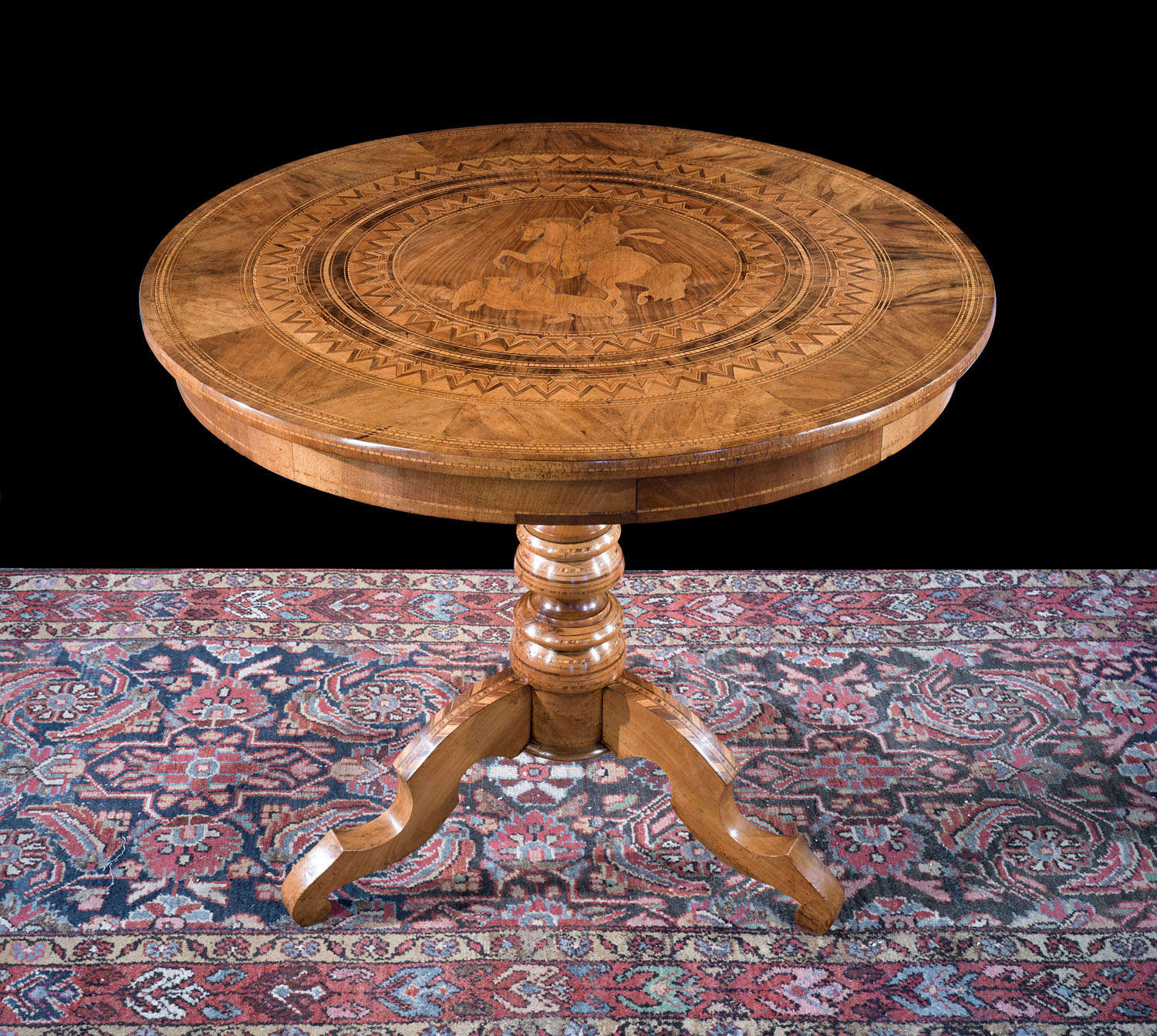
× 
In this stunning fruitwood Sorrento centre table, the middle image depicts a scene from St George and the Dragon.
In addition, around the outside of this scene, there is a beautiful zig zag pattern, an example of the finest parquetry.
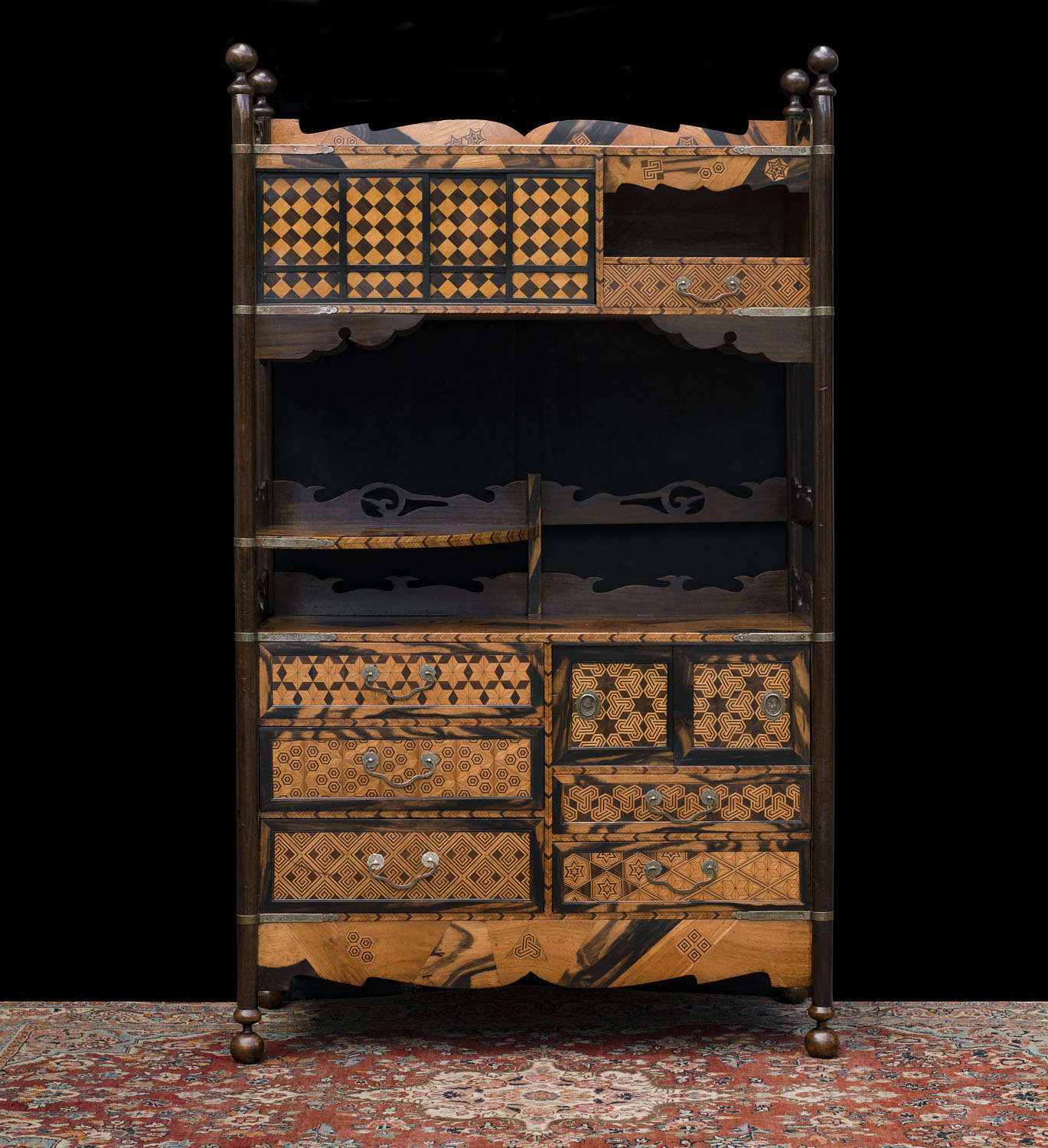
× 
This extraordinary piece is a late 19th century Japanese Meiji period cabinet or Shodhana, which typically served the purpose of displaying fine tea wares or other precious items.
It features a variety of different woods on a Japanese elm carcass, with some signs of marquetry – while the parquetry is clear to see throughout, in particular on the drawers, each with unique patterns.
Final thoughts: Marquetry and parquetry
To summarise, parquetry designs feature decorative techniques and geometric recurring shapes or patterns, often in wood panelling.
In contrast, marquetry tends to be very intricate. It's a labour intensive process with many of these wooden panel pictures looking like paintings – examples include flora and fauna, people, landscapes and even sometimes entire scenes.
We hope this article has provided an informative exploration of marquetry and parquetry in antiques and the decorative panels – for other helpful guides, take a look at our full blog.
For example, previously we’ve explained how to date antique furniture by the feet, one of the most useful features for working out how old different pieces are.
We’ve also provided a how-to guide on identifying antique chairs, as well as one around identifying antique tables and table legs.
For any queries about our antiques or anything else, please don’t hesitate to get in touch.